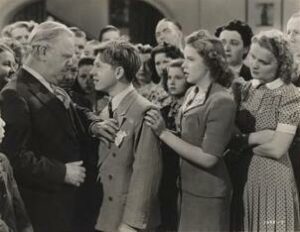How I Decided You Should Pay What You Want For My Stuff
Last week, I announced adoption of a pay what you want model for my creative endeavors. While everything I offer has a minimum and suggested price, you’re no longer limited to those when you buy directly from me. Instead, you can get my books and other creative products for whatever you’re willing and able to pay.
I’m not the only creative entrepreneur to adopt this model, and I’ve certainly seen a lot of examples in the RPG, video game, services, and non-fiction book arenas, but I might be the only fiction author to do so (I’d love to hear about other examples in the comments, please!), as far as I know.
Today, I’ll explain how and why I came to embrace this approach.
Tension
Everyone who intends to support themselves through their creative endeavors likely struggles to reconcile two potentially conflicting desires:
The desire for lots of people to experience your creative work
The desire to be compensated by people who experience your creative work
 For many creators, the tension comes from a fear that the former will suffer from the latter.
For many creators, the tension comes from a fear that the former will suffer from the latter.
I’m 100% in the camp of folks who believe that creators deserve compensation from those who experience their creative endeavors, and yet I still feel that tension.
The undeniable fact of the matter is: by and large, we live in a world where people pay for services rendered.
Often, the payment takes the form of money. That’s appropriate, since service providers need things like food, lodging, and a sufficiently comfortable standard of living so they can live without undue stress.
I’m quite open about my minimum monthly requirements. I can tell you from too much personal experience: nothing kills the desire to make things as effectively as the black cloud of having more debt than income.
I want to create an environment for my work that blends and reconciles the conflicting desires for audience and sustaining compensation.
Letting you pay what you want for my books, short stories, non-fiction, and other creative endeavors takes a lot of that tension out of our relationship.
With the pay what you want model, I no longer have to worry that I’m charging too much, or that I’m devaluing my creations by charging too little (or nothing at all).
Now that anyone can pay based on what they are willing and able to spend, practically no one need be excluded from the opportunity to partake if they wish.
And since everyone pays something— and a non-zero percent will, based on the value they determine for my work, pay more than the minimum or suggested price—each person experiencing my art also helps to support it in a way that is economically meaningful.
“Pay what you want” answers to an ideal I’ve tried to uphold my entire adult life. Let’s look at that next.
The DIY Ethic, Neopatronage, and “Pay What You Want”
For most of my adult life, I’ve followed the DIY (do it yourself) ethic.
 Some folks call it punk, or econo.
Some folks call it punk, or econo.
Mickey Moran might never have actually said, “Hey, kids, let’s put on a show!” in Babes In Arms, but that’s the DIY spirit: don’t let anything—not lack of resources, not public opposition, not the conventional wisdom—keep you from living true to your art.
The DIY ethic has often been the attitude of (little or no) choice for the disenfranchised and under-resourced.
We recorded our songs on cassette tape on a cheap four-track recorder because we couldn’t afford to spend dozens of hours and thousands of dollars in a recording studio.
We laid out our zines with X-Acto knives and glue sticks and printed them on the coin-operated copy machine because we couldn’t afford computer desktop publishing programs or a run from the print shop.
If the clubs wouldn’t have us, we’d play shows in back yards, or storage units, or parking lots.
We did these things because that’s what we had to do to do what we had to do… and because we didn’t listen to the people who said we couldn’t.
Our poverty beget invention; opposition, defiance; creation… community.
The growing ubiquity of the Internet, and, especially, of the World Wide Web during the first decade of the twenty first century, took a movement that already had a next-to-nothing barrier to entry and made acting on that same spirit of wild creativity available to more people than ever before.
Ever.
In 1995, I produced a printed zine read by a few score people in the western United States.
In 2005, I produced a podcast listened to by tens of thousands of people all over the planet.
That same year, I wrote a post that called for two things:
For creators: don’t be afraid to ask people to pay for your creations
For consumers: foster innovation by enthusiastically compensating creators
“Foster” is an important verb. It means, “to help something grow or develop.”
And thence, neo-patronage, wherein a creator’s community of friends and fans put their money down not just to pay for a single song, or book, or film, but also to declare validation of, and endorsement for, a creator’s very effort.
My decision to let you pay what you want for books and other stuff I make and sell depends on the spirit of neo-patronage.
It’s what Amanda Palmer calls “the art of asking,” and why Maria Popova says “donating = loving.”
It feels good to finally be wholly dedicated to that concept, that ideal, on this site.
When you pay even the minimum amount for my creations, you’re joining a community.
When you pay more than the suggested amount, you’re telling me to keep on creating… and in a very literal way, making it easier for me to do so.
That means… everything.
There’s one more thing.
Your Generosity Allows Me To Give, Too
For me, a foundational core of the DIY ethic is that doing it yourself should never mean going it alone.
Clearly.
I’d like to extend that beyond my community of friends and fans.
 So, every time someone pays more than the suggested price for something for sale on this site, I will give 10% of the extra amount to 826 National.
So, every time someone pays more than the suggested price for something for sale on this site, I will give 10% of the extra amount to 826 National.
I’ve talked about them before; you can visit their site and find out more about how they help under-resourced kids grow into writers and storytellers in their own right.
I’ve been a fan for many years, but it’s been a very long time since I’ve made enough money to offer them my own patronage in a meaningful way.
Being able to transform a bit of your generosity toward me into generosity toward them is a happy by-product of my adoption of the pay what you want model.
I hope you agree that it’s a great cause.
Next Up
In a week or so, I’ll write about the technical side of setting up a pay what you want website, including the software tools I used. I’ll also reveal some of the research and inspiration that went into building the site and creating its initial iteration.
If you have questions about the site, my approach to the pay what you want model, or other related stuff, please leave a comment! I’ll either address it here, or incorporate it into that upcoming post.
Thanks! Tell everyone you know!
The post How I Decided You Should Pay What You Want For My Stuff appeared first on Matthew Wayne Selznick.










